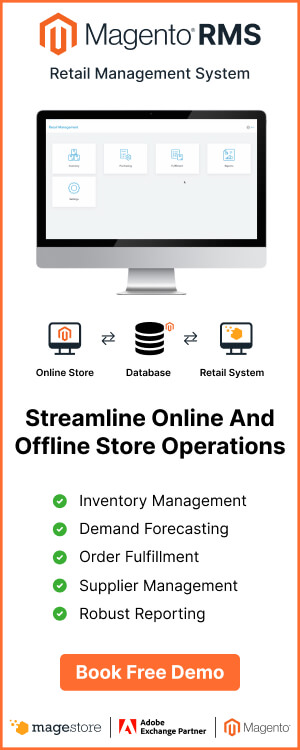When talking about acquiring goods or services for a company, you often hear people use purchasing and procurement interchangeably. However, they are vastly different in their method and process. While procurement is a proactive approach to obtaining goods and building high-value relationships with suppliers, purchasing is a subset of procurement that focuses on making transactions on time and at the best prices. This article will walk you through the difference between procurement vs purchasing and why your business needs to distinguish them.
What is procurement?

Procurement is the entire process of acquiring goods and services from a vendor for your company through direct purchase, tender bidding, or competitive bidding. It consists of identifying, shortlisting, selecting suppliers, signing the contract, receiving goods, and conducting payment. This process helps fulfill the company’s needs and establish a new supplier relationship.
The steps of procurement can vary depending on the business industry and size, but typically include:
1. Identifying internal requirement
First of all, you should determine your business needs. Which products and services are required for your company’s operation?
Then, you can create specific purchase requisitions to tackle the need. Following the requisitions will guide you to the right resources and connect with suitable vendors.
2. Researching the market and selecting vendors
Next, identify potential suppliers and shortlist them for further evaluation. You can send them a request for quotation (RFQ) and compare their proposals. Some criteria include product price and quality, vendor’s reputation, delivery methods, after-sales service, risks, etc.
The selected supplier shall be the one that offers products with the highest quality at the most competitive prices, together with a favorable location and delivery option.
3. Negotiating contract and creating purchase order (PO)

Once you’ve chosen your supplier, let’s move to the next step: Negotiation. Some critical issues when you negotiate include pricing, quality, scope of work, terms and conditions, etc. An effective contract ensures each party understands their obligations while creating maximum value for both sides.
After signing the contract, you can create a purchase order (PO) that specifies the purchase, such as quantity, price, payment terms, location, and time for delivery. Consider a blanket purchase order if the vendors fully meet your requirements and you want a long-term relationship with them.
4. Receiving delivery and initiating payment
Once the supplier receives the PO, they will issue you an invoice. Based on the contract payment terms, you will release payment before or after the order delivery.
When the order arrives, check on the item quality to guarantee vendor compliance. If you find a defective item or any other problems, raise it and follow the contract or PO for a solution. To do that, make sure your contract or PO is strong enough with detailed terms and conditions for such circumstances.
5. Evaluate vendor performance and establish a supplier relationship
If you’re satisfied with the suppliers’ performance, you can set up a long-term relationship with them. In addition, have a yearly evaluation to decide whether to continue collaborating with them.
Therefore, to answer the question “what does procurement mean?”, it’s the full process of acquiring goods and building relationships with vendors. The process has no end, as you should continue to evaluate and improve it.
What is purchasing?

Purchasing is a subset of procurement functions. It’s associated with the activities of ordering, expediting, receiving, and making payments to acquire goods and services for the company’s operation. Purchasing prioritizes efficiency in transactions, with the 5-right discipline: right quantity, right quality, right place, right time, and right price. Thus, purchasing team strictly follow these steps to make sure the delivered goods satisfy all requirement:
1. Placing an order
Purchasing starts with a purchase order. As mentioned above, the PO should contain critical information such as payment terms, quantity, when, and where to deliver the goods.
One tip for better PO management is investing in a reliable PWA Magento purchase order. It centralizes all data, thus helping you make better purchase decisions, preventing over or under-buying.
2. Tracking the order
Next, monitor the delivery status closely with your vendors. You can request them to update their delivery schedule regularly to ensure the order’s punctuality.
3. Receiving and auditing the items
After receiving the order, perform an audit check to guarantee the quality complies with the contract terms.
4. Making a payment
Finally, conduct payment for your supplier according to your payment terms on the PO. Purchase orders and invoices must be prepared carefully to create legal obligations for both parties.
Differences between procurement vs purchasing

Now you’ve known what is procurement and what is purchasing, let’s dive into the main differences between them.
Criteria | Procurement | Purchasing |
Stages involved | Involve stages that happen before, during, and after purchase. | The straightforward steps of buying goods or services. |
Priority | Emphasize the contract value rather than the item’s cost. | Focus more on the product’s price than its value. |
Steps | Include the process of identifying and satisfying business requirements: recognizing needs, sourcing vendors, and signing contract. | Include the specific tasks of fulfilling expenditure: ordering, tracking, receiving goods, and payment. |
Approach | Follow a proactive approach. | Follow a reactive approach. |
Goals | Relational-oriented: Create collaborative relationships with suppliers. | Transactional-oriented: Efficiently obtain goods for business needs. |
The table above summarizes the main difference between procurement and purchasing. Let’s go to further details.
Strategic vs. tactical
After going through the meaning of purchasing and procurement, you can see that procurement is a much broader concept at a strategic level for a company, while purchasing is tactical.
Purchasing relates to the transactional aspect of buying products and services, such as obtaining the correct amount of products at the right time and place.
On the other hand, procurement is the full process commencing at the time a business’ need arises. It focuses on strategic aspects, such as sourcing suppliers, maximizing contract value, and maintaining supplier relationships after the PO is finished. Thus, procurement is a more complex process that is crucial for a business’s strategy.
Proactive vs. reactive approach
Another difference between procurement and purchasing is their approach. Procurement has a proactive approach, where the procurement team is responsible to identify the internal needs and acquire relevant goods or services to fulfill the requirements.
In contrast, purchasing has a reactive approach. After needs are determined by procurement, purchasing aims to buy the items most efficiently in terms of quality, cost, and speed.
Long-term vs. short-term goals

Procurement has long-term goals, including establishing vendor relationships, improving competitive advantage, and aligning with the company’s strategy. It also pertains to finding the best suppliers, negotiating contract terms, and alleviating supply chain risks. Therefore, the procurement prioritizes the value creation of the contract and the total cost of ownership rather than the product’s price.
Purchasing, on the contrary, aims to ensure all items are delivered with the correct quality and quantity in compliance with the contract. Therefore, it is an immediate process that pays more attention to the item’s cost.
Relational vs. transactional focus
One of the foremost purposes of procurement is to establish and strengthen win-win relationships with suppliers.
Even after the order is completed, procurement’s job still continues. You should regularly assess the vendor’s performance and decide whether to renew or terminate the contract. At the same time, carry on sourcing for more potential vendors that can lead to good partnerships. It also helps you limit the risk of relying on a few suppliers.
In contrast, the purchasing team usually collaborates with an existing supplier base. Hence, they spend most of their effort on making efficient transactions, and their tasks end when the PO is finished.
Conclusion
Although many people often mistake purchasing and procurement definitions, the 2 terms have many differences in their methods and procedures. Still, they have 1 thing in common: they’re crucial processes to fulfill your company’s needs.
Combining and enhancing both processes will help you to better control spending, prevent unforeseen complications, and get closer to your business success.













